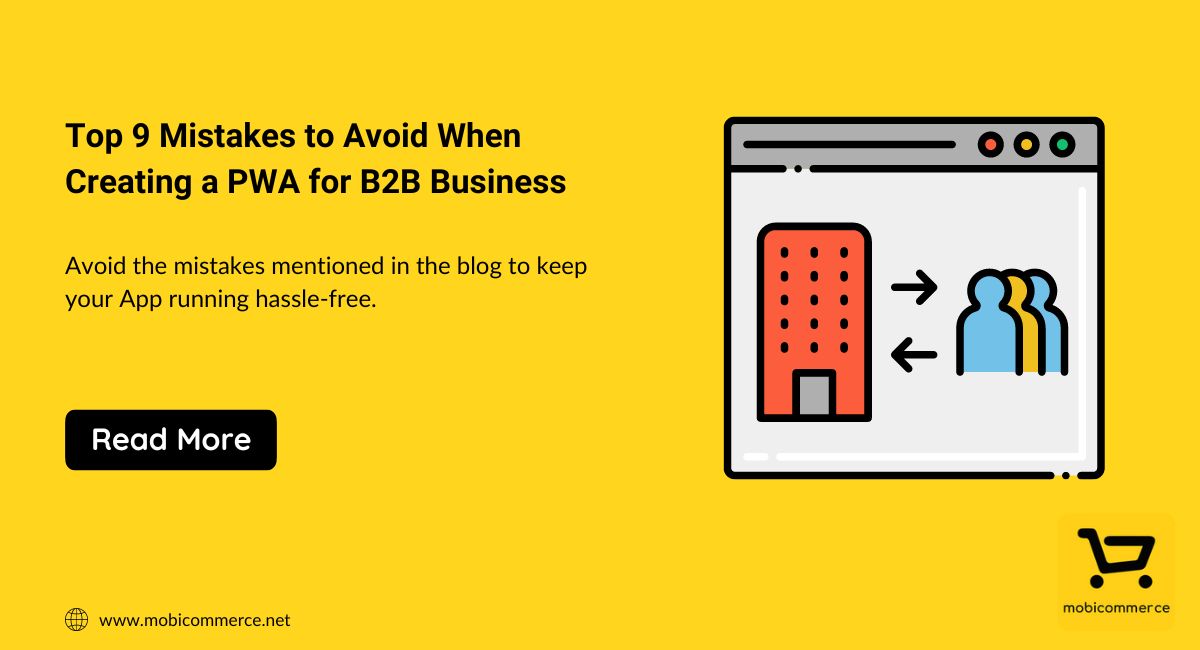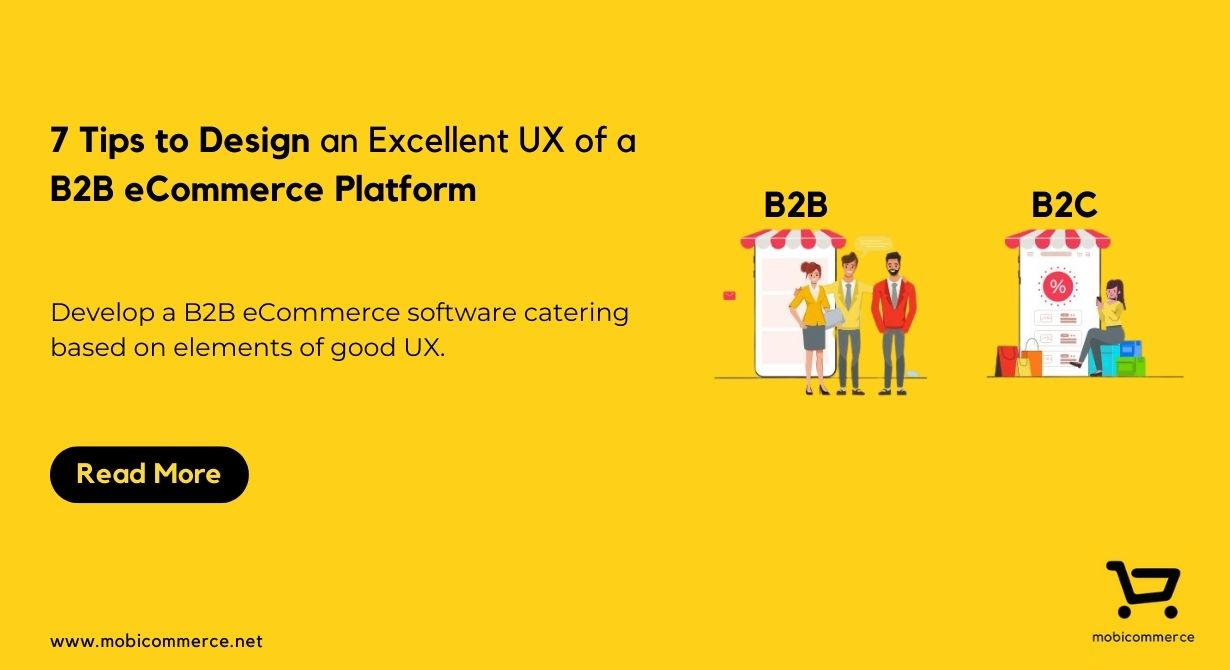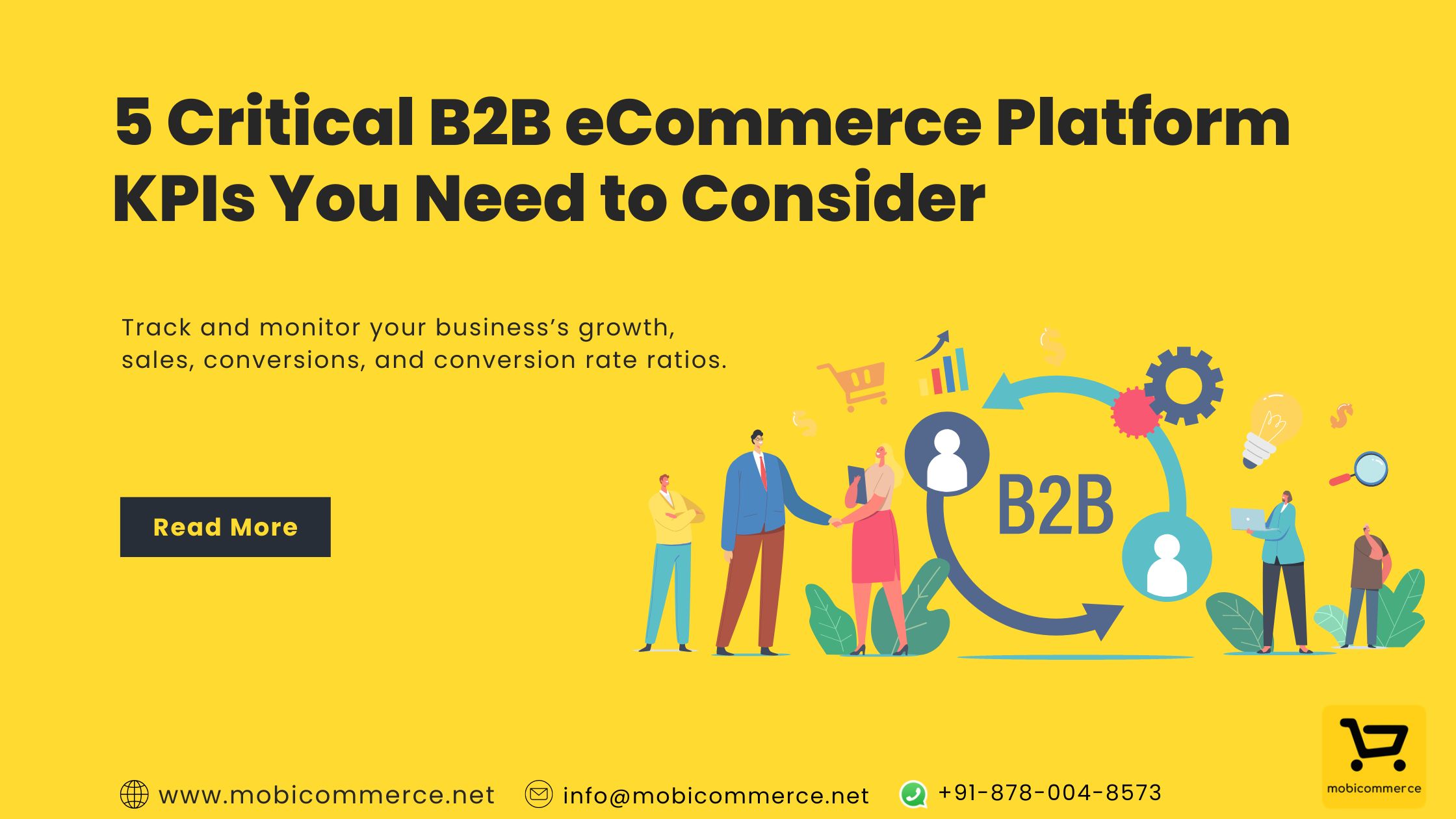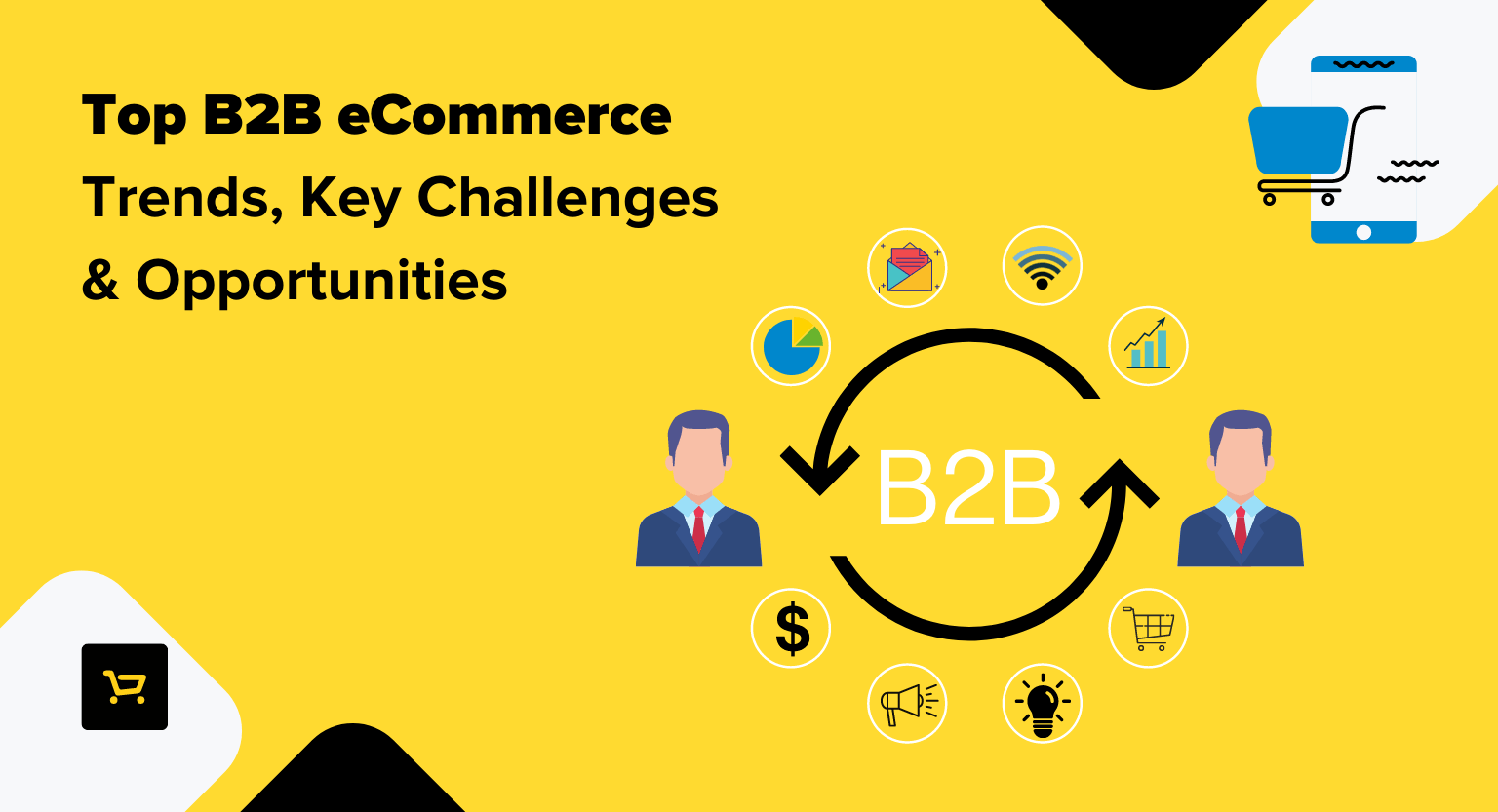Do you want to create a progressive web app for your B2B eCommerce business?
You might wonder what things you should take care of before developing progressive B2B eCommerce solutions.
Or the mistakes to avoid when you want to develop your B2B eCommerce solutions.
As the competition in the market is increasing, companies are developing advanced web solutions to become successful.
Therefore, read this blog post to learn about the mistakes that you must avoid when creating PWA for your B2B eCommerce business.
9 Unnoticed Mistakes You Should Avoid During eCommerce PWA Development
These are the basic and unnoticed mistakes that every entrepreneur should take care of when creating their own PWA eCommerce solution. Let’s start with the first mistake.
1. Developing Complex User Interface for Your Users
It is said that simplicity is about subtracting the obvious and adding the meaning by John Maeda. So, when creating your eCommerce solution, you must ensure that the user interfaces are simple, not complex. What if you create a complex user interface?
Developing a complex interface confuses your users and reduces the frequency of getting engaged in your application. This leads to a loss of users that continuously use your solution. Plus, a complex user interface increases the efforts of your users to find a particular product or service for checkout.
Whereas, here are a few benefits of a simple user interface.
- Users get attracted to clean and simple design
- Increase user engagement on your PWA eCommerce solution
- Increase the speed of making purchases
2. Not Having Clear Navigation in B2B eCommerce Platform Software
You might know that a progressive web app acts as a mobile app and offers a native user experience like mobile apps. Therefore, you should have clear navigation of your application. Creating a user journey helps you to avoid the most possible bugs that users might face in the future.
So, to avoid any confusion on your eCommerce solution, you should offer a navigation bar. This way, you guide your users to easily navigate your B2B eCommerce platform software solution without facing any hassle.
3. Over Load of Push Notifications
Sometimes benefits of PWA technology can become disadvantages for B2B eCommerce solutions. The reason? Sending too many push notifications to your eCommerce solution users creates disruption.
However, you need to identify the timeline and frequency for sending notifications to your users. This way, you keep aware your users of your new services and products.
4. No Consistency in the UI of Your eCommerce Solution
Design is an extremely important part of whether you want to develop a mobile app or an eCommerce solution. Because user experience is always on top of the user interface. Design connects your users with your software. In addition, the design itself determines the story of the UI/UX designer’s efforts.
Therefore, experienced UI/UX experts prefer to keep consistency in the design. So, users are able to connect themselves with the design of the application. This is the reason that you should ensure the consistency of graphic elements for your eCommerce PWA development.
You would notice that tech brands such as Apple or Google maintain the design elements in their mobile phones and even on their websites and software.
5. Creating Complication Checkout Process
As per the study, 20% of online shoppers abandon their shopping carts because of the complex checkout process. The reason is people don’t want to invest much time during the checkout page. As you get more customers, there are higher chances of cart abandonment.
Thus, you should create a simple checkout process in your eCommerce solution. This way, you have the least chance of the checkout process. However, we also suggest you keep the simplest checkout process. To keep your eCommerce checkout process simple, you can even use the Magento 2 One-step Checkout Extension.
6. Use of Complication Fonts in Your eCommerce Solution
When having simple and readable fonts on the eCommerce solution, there are fewer chances of loading issues. As you include exclusive fonts, there are chances that it take more time to load on your users’ website. On top of that, even it can also happen that some of the old web browsers don’t load the new and exclusive fonts.
Even, if the browsers support these new and heavy-weight fonts then it can be seen that it increases the load speed of your PWA eCommerce app. And, it is believed that there are very few chances of a website getting ranked as Google doesn’t like websites that take too much time to get loads for the LCP.
7. Not Making Your eCommerce App Available Offline
You must create your eCommerce app that is capable to work even without internet connectivity. PWA technology allows you to create an offline application so users are able to work are even when offline on the internet.
How does it help? Creating a PWA app that helps your users to use your application offers a great user experience. Because if you don’t have offline functionality then users might leave your app and it could lead to leaving potential customers.
8. Making it Less Compatibility with All Types of Web Browsers
Before developing your eCommerce PWA app, you must check all the browser compatibility. This is because your app should work on all types of web browsers and should function well so users don’t get abandoned by your website.
Avoiding browser compatibility can lead to the failure of your progressive web app for your eCommerce business. Therefore, you must ensure that your eCommerce app is compatible with web browsers and functions well on the platform without facing any major difficulty. Because you must ensure a good user experience so you gain more users to your website.
9. Avoiding Integrating SEO functions in Your eCommerce App
When you develop an eCommerce PWA app, you should know that one of the core functions of every PWA is SEO compatibility. But, if you don’t make it an SEO-centric app, then you are missing the opportunity to rank on Google.
Therefore, you should integrate SEO functionalities or make your eCommerce app SEO compatible. So, you can rank your eCommerce app on the top search engines like Google, Bing, and Duck Duck Go.
Conclusion
If you are planning to create PWA for your B2B business, then avoid these mentioned mistakes. By avoiding them, you would be able to create your PWA application better compared to the normal PWA app. So, you get higher chances of the PWA solution getting successful. If you have any queries or questions, connect with us. We are a premier PWA eCommerce solution development company. We have developed over 2500+ apps for different clients around the world.











